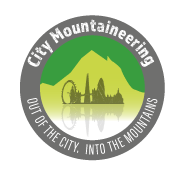
SNOWDONIA
History
HISTORY
Snowdonia National Park was established in 1951 as the third national park in Britain, following the Peak District and the Lake District. It covers 827 square miles (2,140 km2), and has 37 miles (60 km) of coastline.
The Snowdonia National Park covers parts of the counties of Gwynedd and Conwy.
Before the boundaries of the national park were designated, "Snowdonia" was generally used to refer to a smaller area, namely the upland area of northern Gwynedd centred on the Snowdon massif, whereas the national park covers an area more than twice that size extending far to the south into Meirionnydd.
The traditional Snowdonia therefore includes the ranges of Snowdon and its satellites, the Glyderau, the Carneddau, the Moelwynion and the Moel Hebog group. It does not include the hills to the south of Maentwrog. As Eryri (see above), this area has a unique place in Welsh history, tradition and culture.
The Snowdonia Society is a registered charity formed in 1967. It is a voluntary group of people with an interest in the area and its protection.

ETYMOLOGY
The English name for the area derives from Snowdon, which (at 1,085m) is the highest mountain in Wales.
In Welsh, the area is named Eryri. A commonly held belief is that the name is derived from eryr ("eagle"), and thus means 'the abode/land of eagles', but recent evidence is that it means Highlands, and is related to the Latin oriri (to rise).
The term Eryri first appeared in a manuscript in the 9th-century Historia Brittonum, in an account of the downfall of the semi-legendary 5th-century king Gwrtheyrn.

MYTHS AND LEGENDS
The culture and identity of the Snowdonia region has been significantly influenced by the myths, legends, folklore, giants, monsters and magic that are associated with almost every lake, hill, mountain and village. The Welsh tradition of storytelling has ensured that these rich and varied tales are still as vibrant today as they were in their early beginnings in the mists of time. Wherever you visit in Snowdonia Mountains and Coast, the past, its magic, mythology and legends are around every corner.

LAND OWNERSHIP
The park is governed by the Snowdonia National Park Authority, which is made up of local government and Welsh representatives, and its main offices are at Penrhyndeudraeth. Unlike national parks in other countries, Snowdonia (and other such parks in Britain) is made up of both public and private lands under central planning authority. The makeup of land ownership at Snowdonia is as follows:
- 69.9% Private
- 8.9% National Trust
- 1.2% National Park Authority
- 17.5% Natural Resource Wales
- 0.9% Water companies
- 1.6% Other
More than 26,000 people live within the park. 58.6% of the population could speak Welsh in 2011.
While most of the land is either open or mountainous land, there is a significant amount of agricultural activity within the park.

INTERESTING FACT
Unusually, Snowdonia National Park has a hole in the middle, around the town of Blaenau Ffestiniog, a slate quarrying centre. This was deliberately excluded from the park when it was set up to allow the development of new light industry to replace the reduced slate industry.
